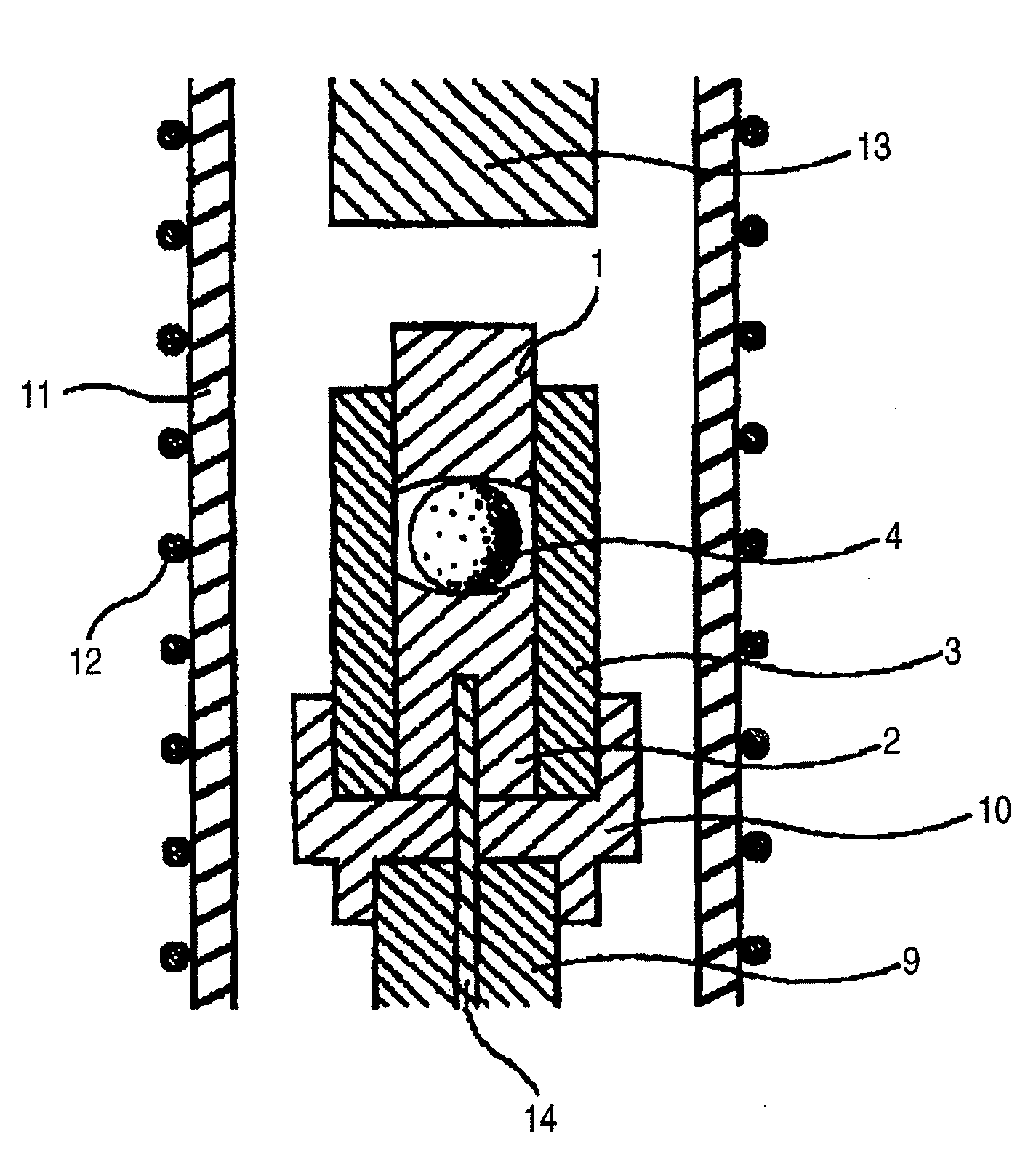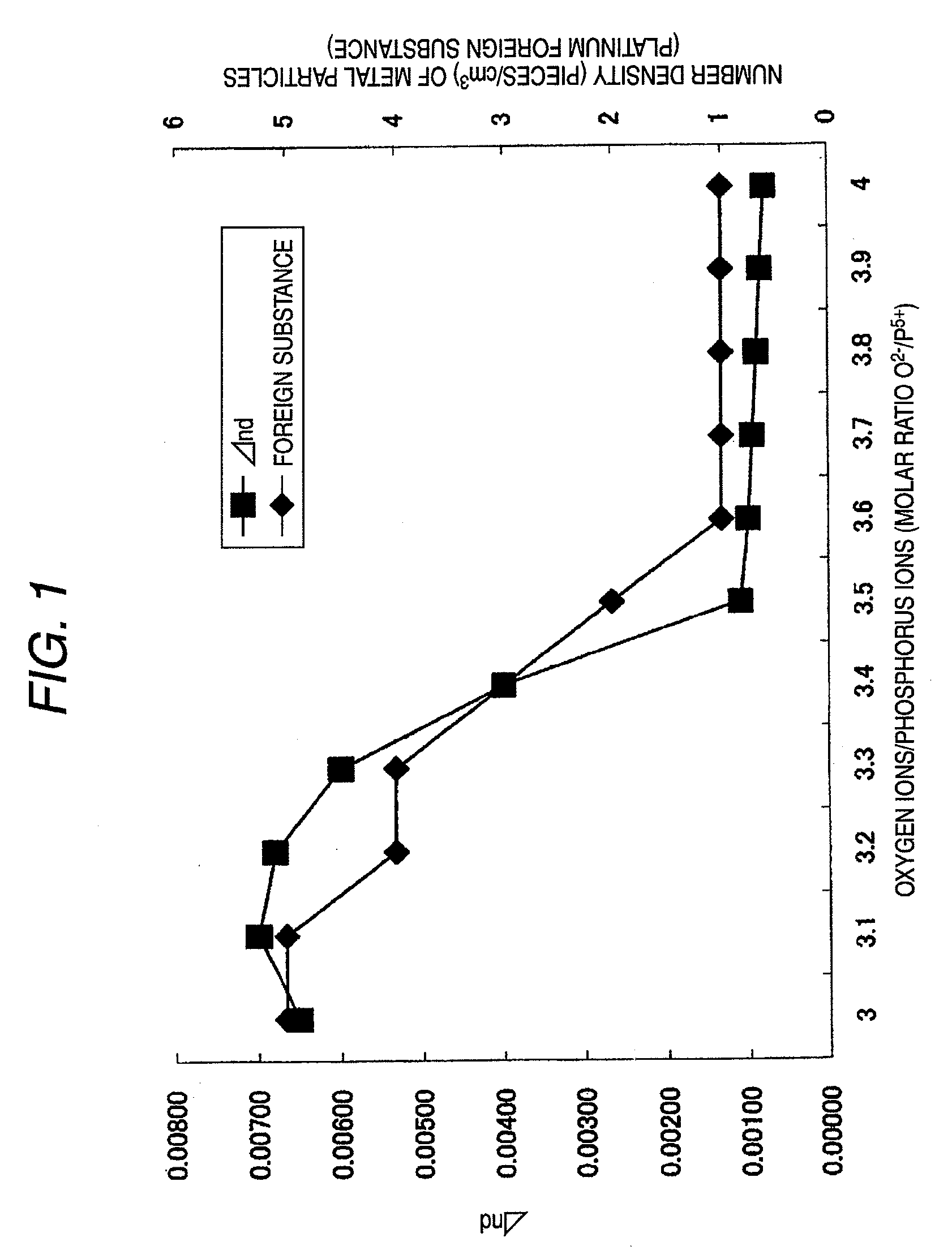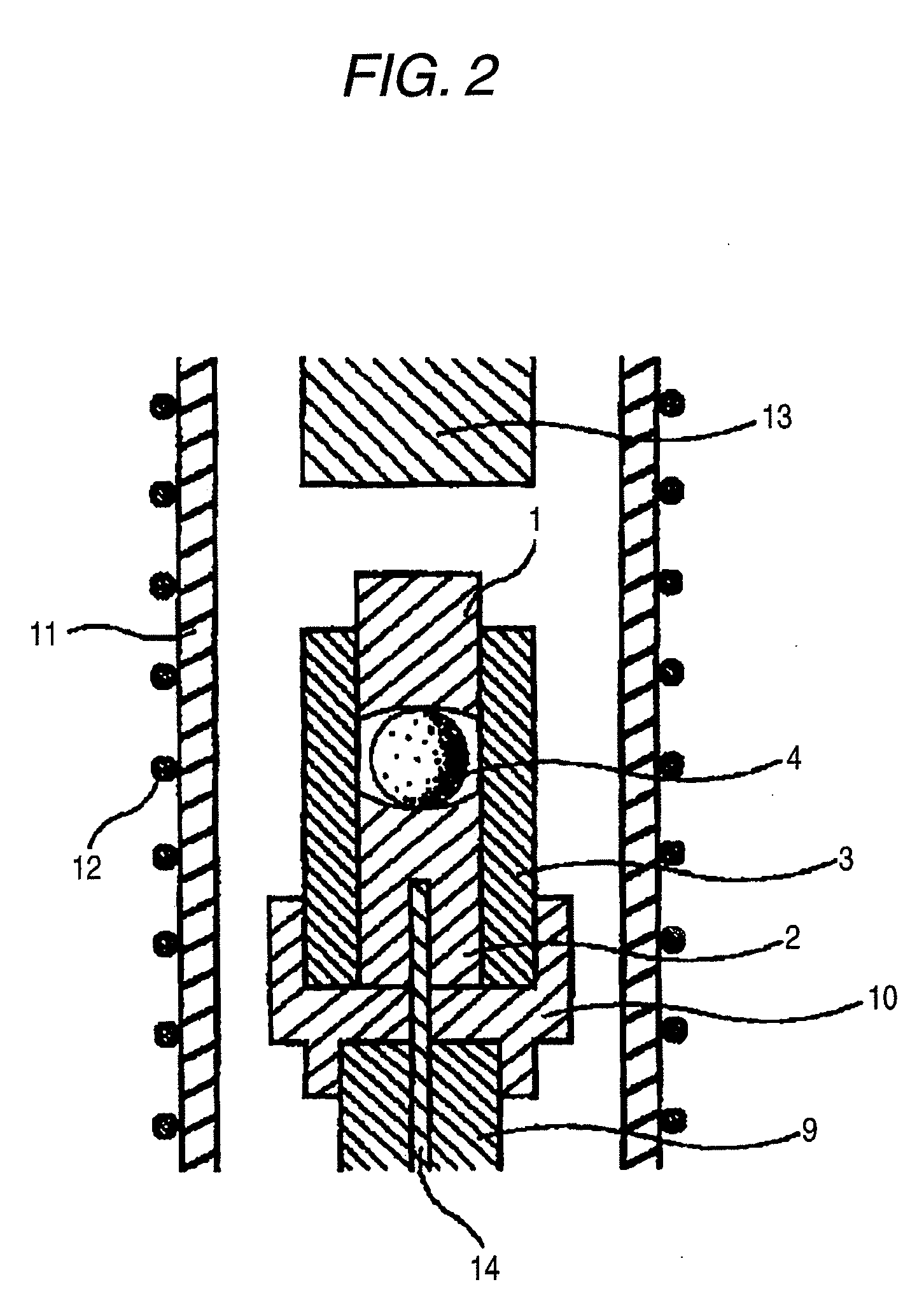Fluorophosphate glass, glass material for press molding, optical element blank, optical element and methods of manufacturing the same
a technology of fluorophosphate glass and press molding, which is applied in the field of fluorophosphate glass, glass material for press molding, optical element blank, optical element and method of manufacturing the same, can solve the problems of easy change of optical characteristics such as refractive index, hard to stably produce high-quality glass, and eroded slightly by molten glass of platinum crucible, etc., to achieve good optical homogeneity
- Summary
- Abstract
- Description
- Claims
- Application Information
AI Technical Summary
Benefits of technology
Problems solved by technology
Method used
Image
Examples
example 1
Example of Manufacture of Fluorophosphate Glass
[0271]In order to prepare glasses having compositions shown in Tables 1-1 to 1-6, raw materials such as phosphate e.g., diphosphate, and fluoride, corresponding to respective glass ingredients were weighted and sufficiently mixed. Tables 1-1 to 1-6 show a ratio (O2− / P5+) of the total content of O2− to the total content of P5+ and a ratio (F− / (F−+O2−)) of the content of F− to the total content of F− and O2− in the mixed raw materials. The mixed raw materials were put in a platinum crucible, stirred, heated and melted for one to three hours in an electric furnace at 900° C., clarified and homogenized to obtain a molten glass. The obtained molten glass was cast in a mold to obtain glass blocks composed of various fluorophosphate glasses (fluorophosphates glasses 1 to 59). Incidentally, in the melting, clarification and homogenization of the glass, no atmosphere exchange was conducted.
[0272]While it was confirmed that there is no striae in ...
example 2
Example of Manufacture of Press Molding Preform
[0283]A lump of molten glass was separated using a method of flowing molten glass from which the fluorophosphate glasses 1 to 59 are obtained out of a pipe made of platinum alloy and adjusted to a temperature range to allow stable flowing without glass being devitrified, at a constant flow rate and dropping a lump of glass, or a method of supporting a leading end of stream of the molten glass using a support and suddenly descending the support to separate a lump of glass. The obtained lump of molten glass had a weight which is an addition of a weight of a removed portion, which will be described later, to a weight of one objective preform.
[0284]Next, the obtained lump of molten glass was received in a receiving mold having a glass exhaust nozzle formed in its bottom portion, the lump of glass was molded while rising the lump of glass by a gas exhausted from the gas exhaust nozzle, and press molding preforms were prepared. The preforms w...
example 3
Example of Manufacture of Optical Element
[0289]An aspherical lens was obtained by precision press-molding the preform, which was obtained in Example 2 and composed of the fluorophosphate glasses 1 to 59, using a press apparatus shown in FIG. 2.
[0290]Specifically, after placing a preform 4 between a lower mold 2 and an upper mold 1 of a press mold including the upper mold I, the lower mold 2 and a trunk mold 3, a quartz tube 11 was electrically conducted to a heater 12 in a nitrogen atmosphere to heat the quartz tube 11. The internal temperature of the press mold was set to a temperature at which glass to be molded shows viscosity of 108 to 1010 dPa·s, and while maintaining the same temperature, a pressing rod 13 descended to push down the upper mold 1 to press the preform set in the press mold. Press pressure was set to 8 MPa and press time was set to 30 seconds. After pressing, the press pressure was released, a press-molded glass molded article was slowly cooled to a temperature a...
PUM
| Property | Measurement | Unit |
|---|---|---|
| temperature | aaaaa | aaaaa |
| glass transition temperature | aaaaa | aaaaa |
| molar ratio | aaaaa | aaaaa |
Abstract
Description
Claims
Application Information
 Login to View More
Login to View More - R&D
- Intellectual Property
- Life Sciences
- Materials
- Tech Scout
- Unparalleled Data Quality
- Higher Quality Content
- 60% Fewer Hallucinations
Browse by: Latest US Patents, China's latest patents, Technical Efficacy Thesaurus, Application Domain, Technology Topic, Popular Technical Reports.
© 2025 PatSnap. All rights reserved.Legal|Privacy policy|Modern Slavery Act Transparency Statement|Sitemap|About US| Contact US: help@patsnap.com



